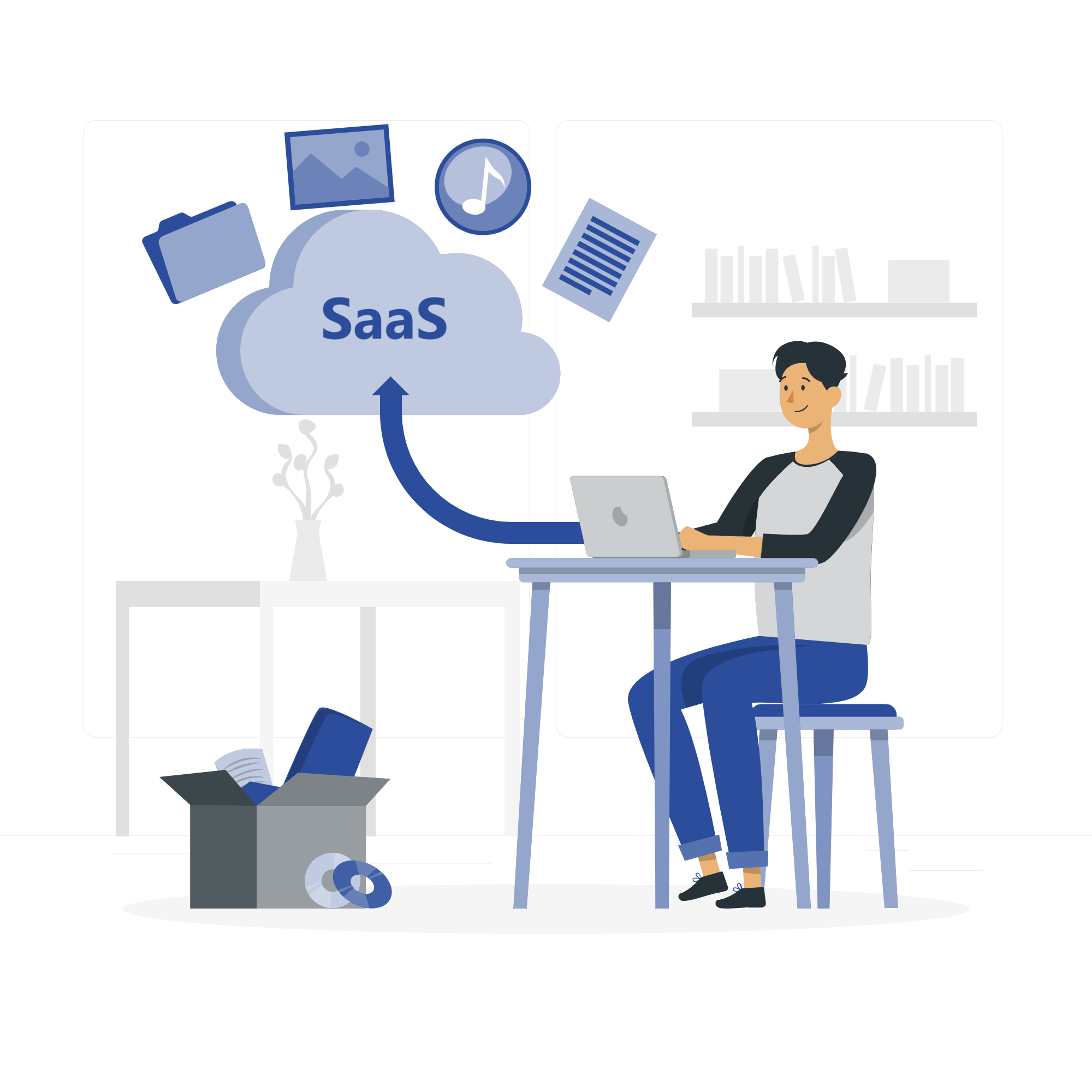What is SaaS (software as a service)?
Jan 21, 2025 -
What is a SaaS?
SaaS or "Software as a Service" is a cloud-based software model, where applications are hosted on the servers of service providers, and can be accessed remotely over the Internet without the need to install or configure them locally on users' computers or servers.
One of the main benefits of SaaS is that the user will not have to worry about software updates, maintenance, etc., because all of this is handled by the service provider, of course, in exchange for a periodic subscription paid by the user within different plans that suit the user’s needs.
The main benefits of Using SaaS:
There are many advantages that make SaaS a good option for individuals and companies:
-
No large upfront cost since there is no need to pay for hardware and software purchasing, or even for technical support and maintenance, as payment is made within periodic subscriptions which include maintenance and technical support as well.
-
You can access your application from anywhere and from any device, all you need is an internet-connected device and a browser.
-
Providing Highest level of security through periodic updates, backups, and protection from cyber-attacks, which is committed by service provider.
-
Various subscription plans that match your business needs, whether you need more storage, more users, or additional features, you can typically scale your subscription easily.
SaaS Applications:
The SaaS model offers solutions in many different fields such as human resources, accounting, marketing, and others. Here are some examples:
First: Customer Relationship Management "CRM" Through cloud CRM platforms, the user can subscribe to this service and access it from anywhere via the Internet. Through this service, the user can manage and track customer interactions and store all customer-related data on cloud servers provided by the service provider. "Alaaqat" is considered one example of cloud CRM solutions.
Second: Human Resources “HR” Online HR management is a powerful tool that can help small and medium-sized businesses to manage employee’s data more efficiently. With these tools, HR managers can eliminate routine tasks (such as managing multiple spreadsheets), making task management and execution simpler and more efficient.
Third: Accounting and Finance Cloud-based accounting applications help small and large companies to manage their accounts and financial resources, without the need to install complex accounting programs on their computers. These programs are accessed via the Internet.
Fourth: Cloud Storage The concept of cloud storage refers to the online data storage service, where the user can subscribe to this service that enables him to store files and data on servers over the Internet instead of storing them locally on personal computers or hard disks. These files can be accessed remotely via the Internet.
The Future of the SaaS Model:
The SaaS model is one of the business models that will continue to develop and grow due to the advanced technologies shaping the world today.
-
For example, artificial intelligence technology will contribute to providing integrated solutions for automating business processes, analyzing data, and making decisions, thus increasing productivity.
-
There will be an increasing shift towards specialized SaaS solutions designed for specific fields such as healthcare, real estate, and industrials, known as "Vertical SaaS". This shift will allow companies to have highly specialized solutions that address the weakness points of their industry. Instead of a one-size-fits-all approach, companies will increasingly demand SaaS applications that provide specialized solutions.
-
With a multi-cloud strategy, companies will no longer rely on a single cloud provider but will adopt a multi-cloud approach to ensure greater flexibility, increased security and reliability, and reduced dependence on a single provider. SaaS providers will seek to offer solutions that work more seamlessly across different cloud platforms.
-
No-code or “low-code” platforms will keep evolving due to the increasing demand for rapid application development and will become a key part of the future of “SaaS” models. These platforms do not require specialized developers, which means that the non-technical people can easily create and customize applications without the need for large development teams.
